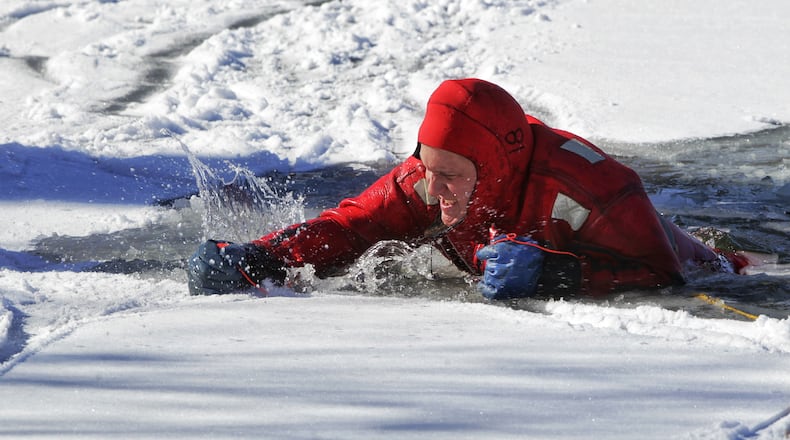Bucheit said the ERS team is comprised of about 30 members from the sheriff’s office and fire departments in Hanover Twp., Forest Park and Colerain.
The annual ice rescue recertification consists of classroom instruction and hands-on training, Bucheit said. It’s important to train as many deputies as possible because if there’s an ice rescue near where one of them is patrolling, they can respond quicker than if a fire department was dispatched.
“Time is of the essence,” Bucheit said. “It doesn’t take long before the cold water steals the heat from your body.”
The team trains using several ice rescue techniques, including inflating a fire house with air and floating it over the ice, using ice picks, throwing a safety line from the shore, using throw bags to the person in the water and pulling them to safety.
Capt. Jamie Verdin said members of the Middletown Division of Fire trained last week and about 40 of the city’s 80 firefighters completed the annual exercise.
He said every piece of fire equipment in the city is equipped with gear needed during an ice rescue. That’s important, he said, because every fire station could respond to a rescue call.
While at Smith Park, Verdin said firefighters worked on various thicknesses of ice and on one-person and two-person rescues.
On Tuesday, the ice was relatively thin, about 1.5 to 2 inches, and symbolic of the “real world,” he said.
When the ice is that thin, firefighters work on distributing their weight properly in hopes of not falling through, he said.
He said water and ice rescues are different because it’s the “current that kills people” in the river and if someone falls under the ice, they must be rescued before their body temperature drops too far.
“You have to respect the ice,” Verdin said.
About the Author

